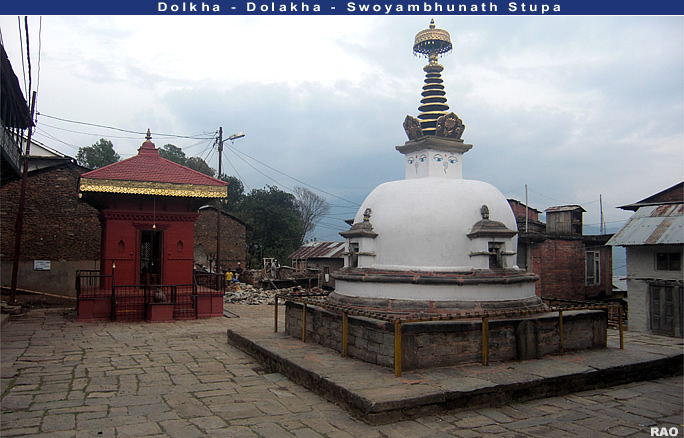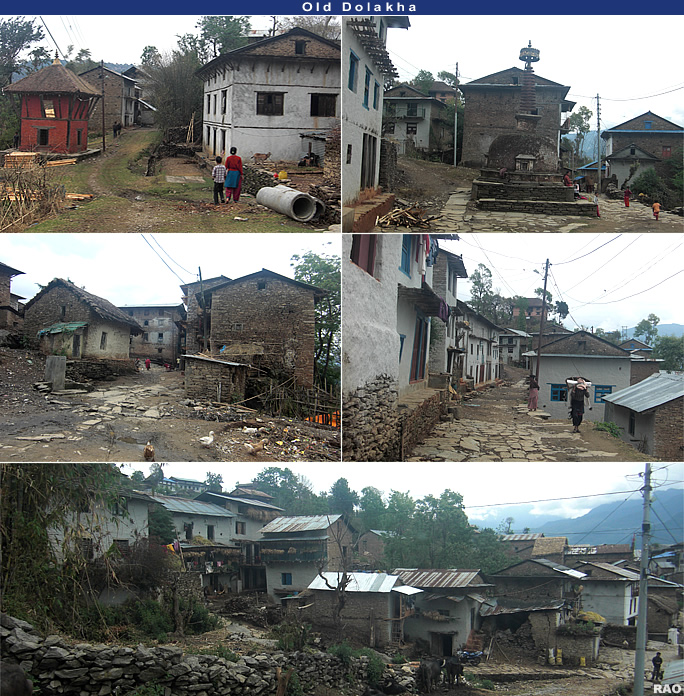 |
Charikot
and Dolakha |
|
|
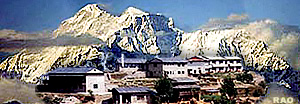 |
|
About
the Area: Mythical Dolakha |
Dolakha
has it all for the inquiring and the attentive. If you are with someone
who knows the area like his palm-lines, there is every chance that you
will soon understand the changing ethos of the place. The town's neat and
well-regulated life steeped in age-old traditions.
The
fresh air, the tourist spots that are almost voluble about their ancient
tales, and the simple, believing people immediately send to rest the typical
desperation of the resident of a metropolis. Perhaps that is why the Maoists
spared the town, influenced by the spell of its feminine beauty.
 |
| In
ancient times when Nepal had a profitable trade relationship with Tibet,
this was the route that merchants used. It was then that this town rose
to prosperity. There are still some houses belonging to those times. According
to some locals, the town has more or less faithfully maintained its past
appearance.
Apparently,
as soon as trade and commerce dried up, Dolakha ceased to age. Despite
the time-ravaged houses, the town is young, and so are its sons who constitute
one of the most reliable work forces for odd jobs in the capital. |
|
When
Laxman was injured and the great ape-god Hanuman was asked to bring
a certain medicinal herb for the rescue, the mighty ape-god hovered on
the sky above Dolakha, say the locals. Probably the beauty of the region
dulled his sense of judgement and he ended up taking a chunk of a hill
near the Gaurishanker mountain. "You can still see a chunk missing there,"
says Rakesh Shrestha of Ccho-Rolpa Tours and Tavels. And even though you
cannot clearly make out the pointed spot due to the distance, you will
be surprised to find that your mind has all of a sudden acquired extra
creativity. In a flash of a second, you have conjured up the image of the
ape-god performing that wondrous feat.
That
is not all. The Bhimeshwor temple is not a new name to the god-fearing
throughout the nation. People pour in every week from the capital and from
various other districts to offer prayers to the God. During their visit,
they don't forget to ask one famous question, "Is the God sweating?" For
they all have heard that if Bhimeswor sweats, that means something big
is to happen. And that may be good or bad.
Legend has it that the despairing Lord
Shiva traveled though this area, carrying the corpse of His beloved Sati
Devi. The corpse of the goddess had decayed so badly that a piece of
her flesh detached and fell down the gorges immediately north of Dolakha.
Thus sprang up the temple of Tripura Sundari. Talk to the priest
and he will confide that a certain golden icon was stolen from this beautiful
temple years ago. Hence, the misfortune that has befallen the country ever
since.
Though
decrepit with lack of maintenance, the Manjushree Park. will spring
up to life as soon as you step in. It will start whispering love-poetry
through the branches of its old and wise trees. If you have an inclination
to pen down verses, you might even end up writing some poems. But be careful,
the ground is slippery. The dry grass will try its best to upset your balance.
But then, it is a harmless mischief. Even if you slip and fall down six
times or even a dozen times as I did, don't curse the area. For there are
forest-gods hovering around, and you might end-up infuriating them.
Quite
naturally, as Dolakha has been at peace since a long time. And the logic
of conflict is something that they cannot understand, unless as some form
of madness, spiritual illness, or moral pestilence.
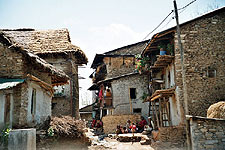 |
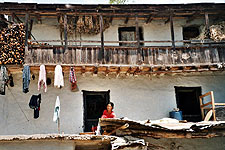 |
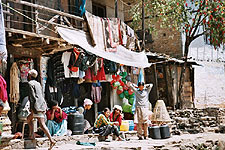 |
| Old
Dolakha |
Old
Dolakha |
Dolakha |
 |
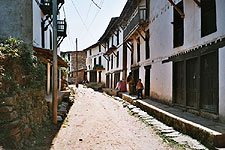 |
 |
| Old
Dolakha |
Dolakha |
Old
Dolakha |
 |
|
Nepal |
|










